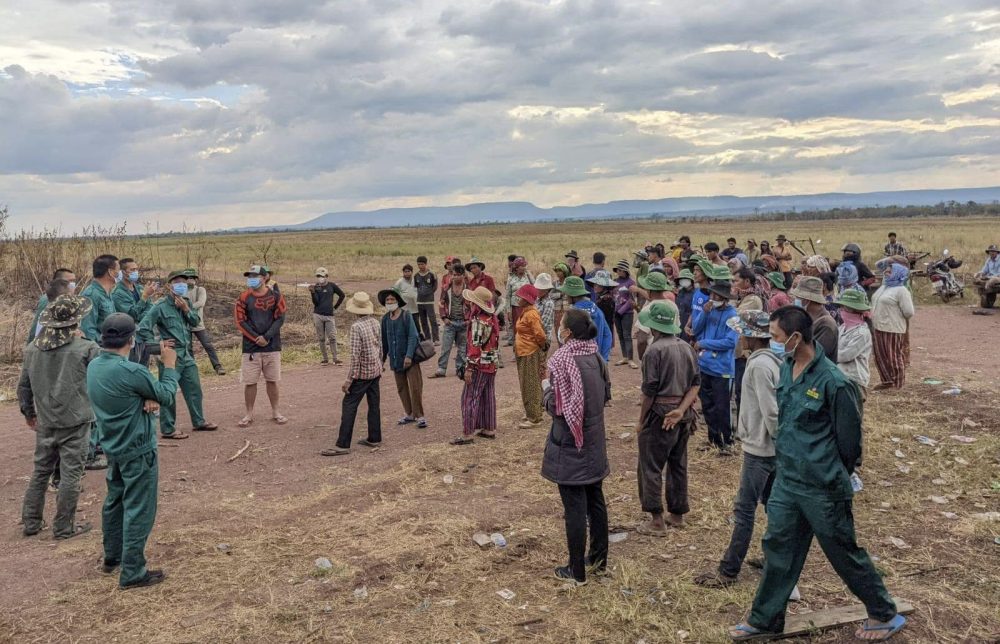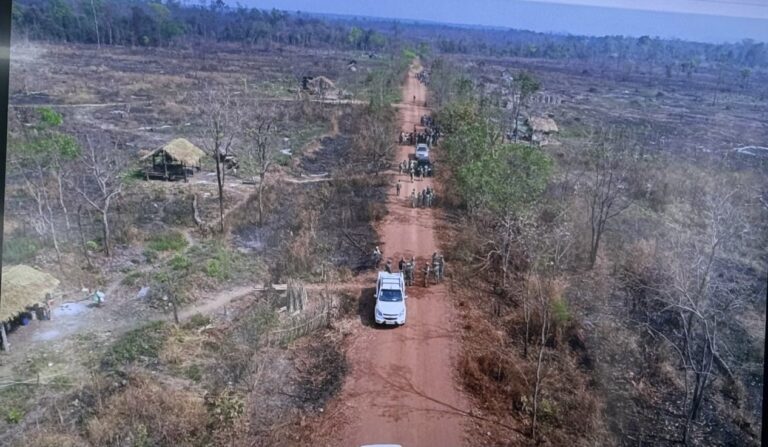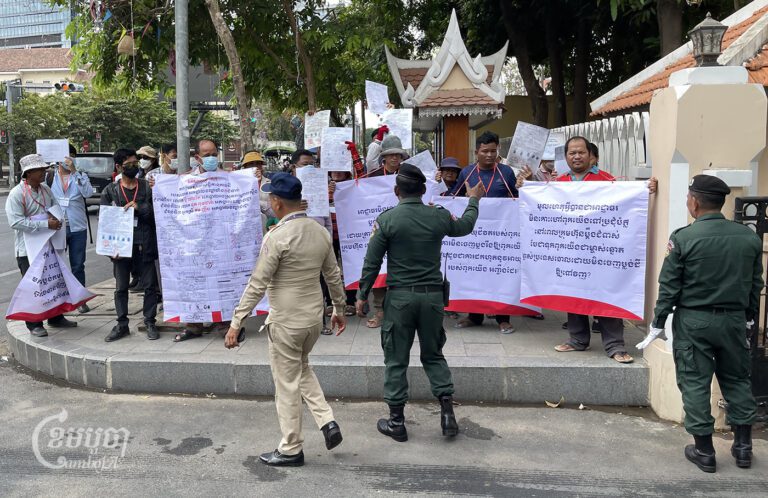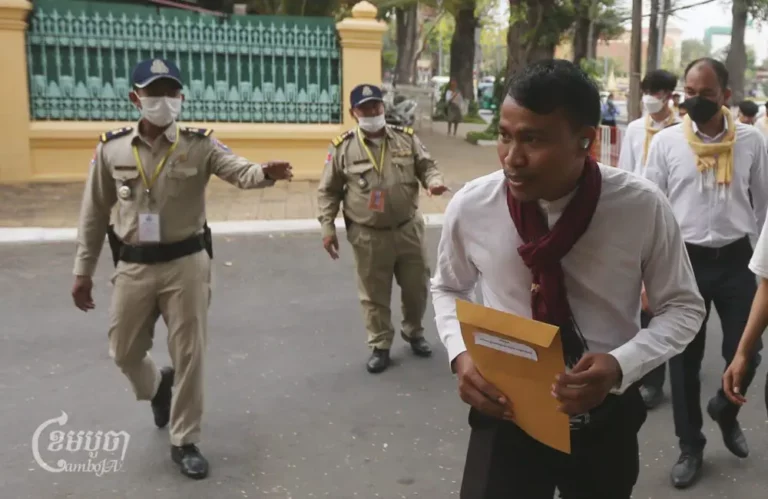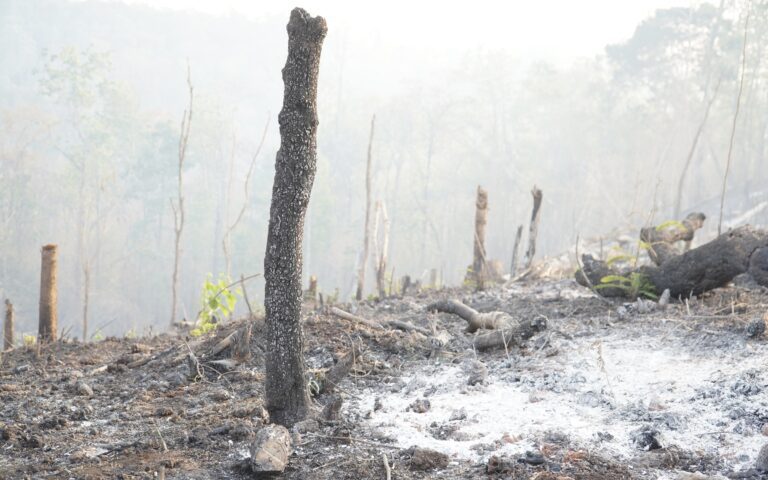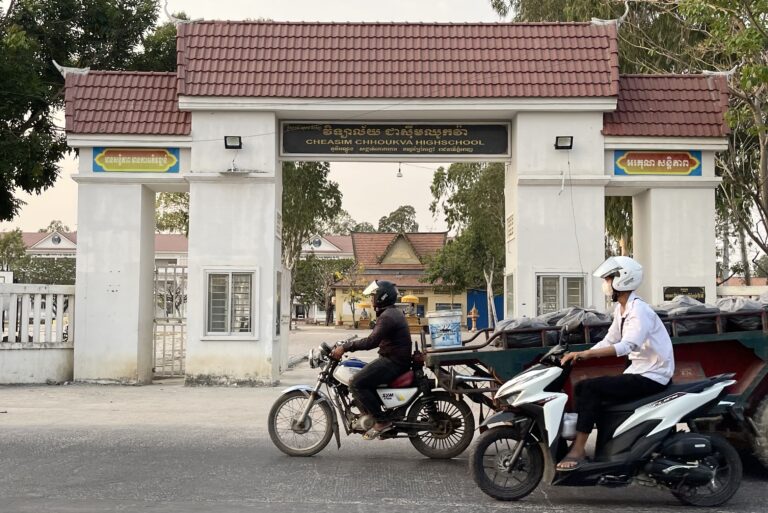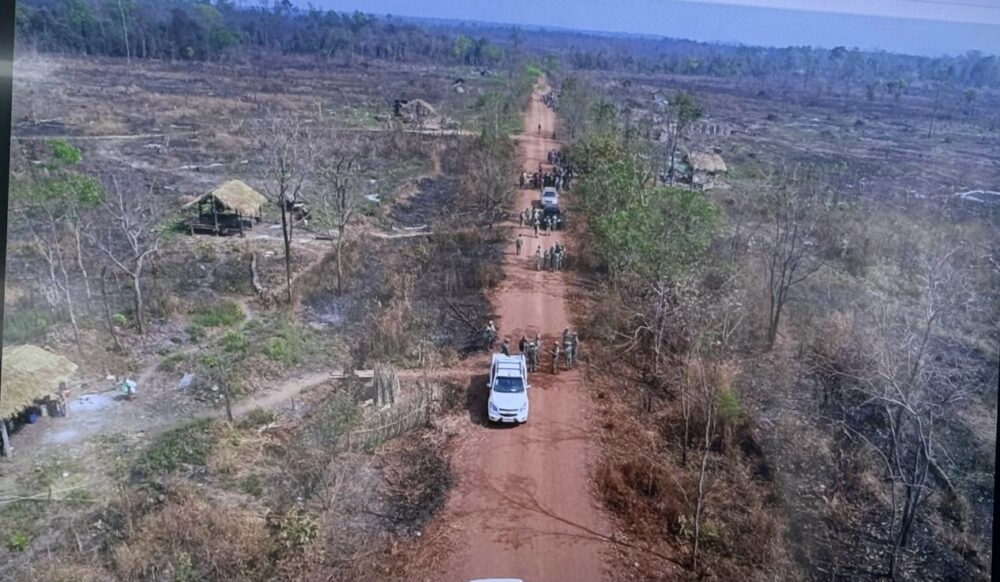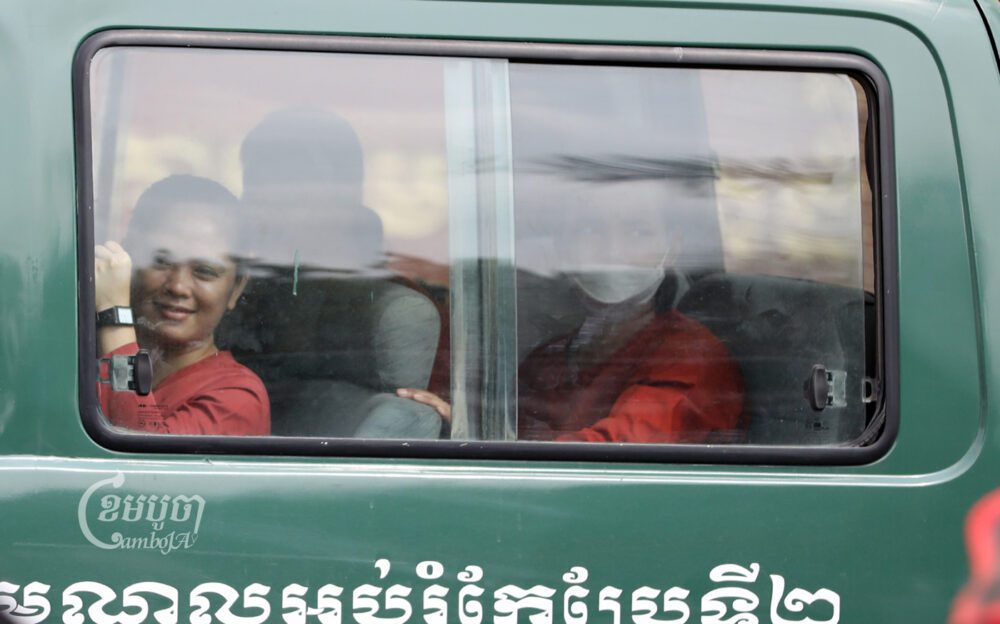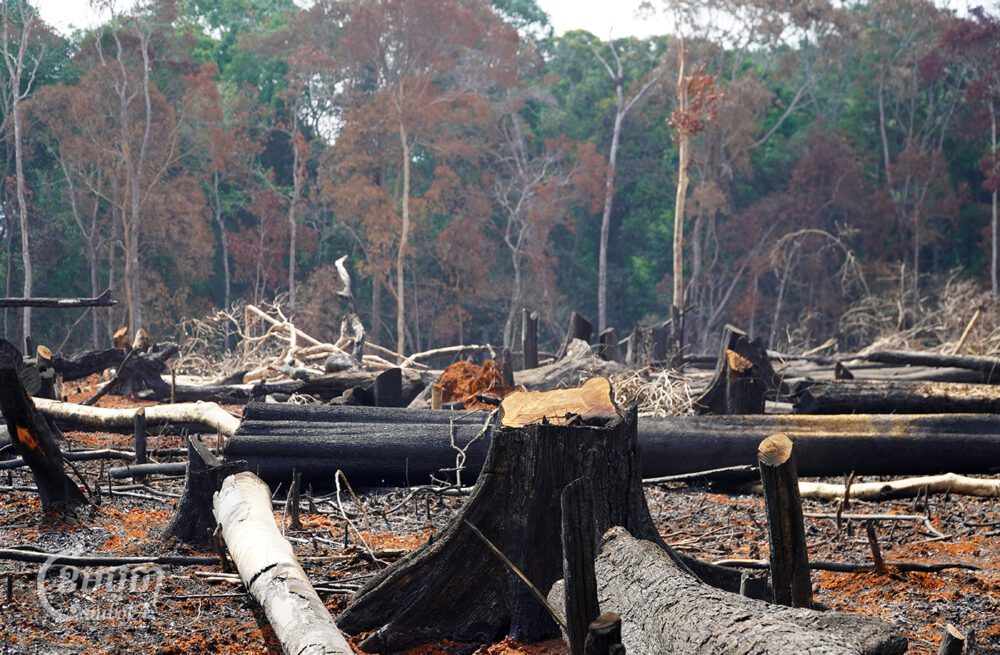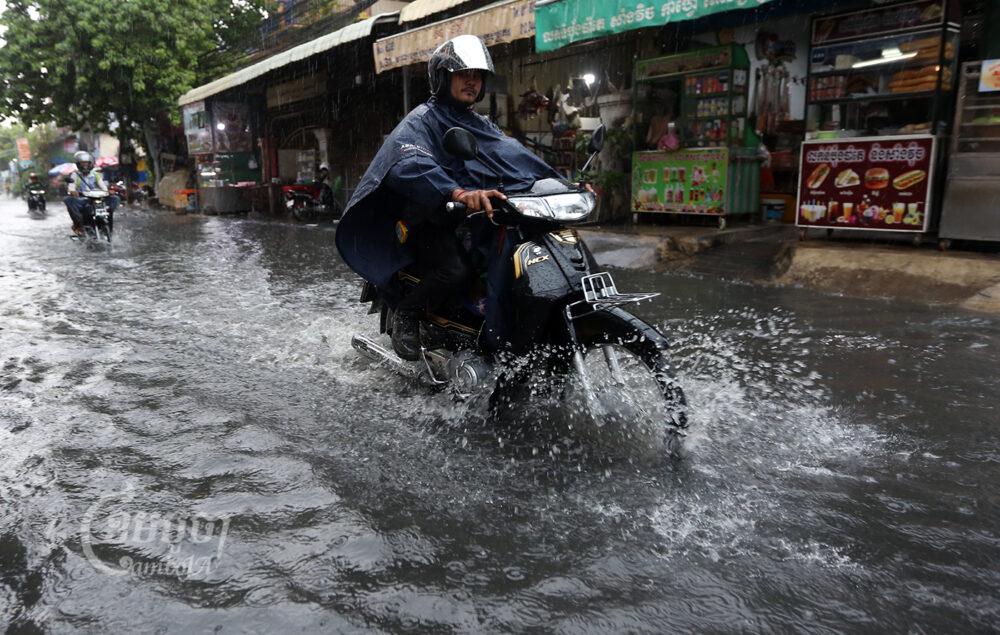The representatives of two different indigenous communities in Kampong Thom and Preah Vihear provinces are calling for government intervention to help solve long-running land disputes in their communities.
Heng Saphen, 53, is a representative of the Kouy indigenous community in Ngoan village in Kampong Thom’s Sandan district. She told CamboJA that her community’s land was once rich in natural resources and non-timber forest products.
However, she said that since a company called Sambath Platinum Co. Ltd. started using the land as a rubber plantation in 2011, 121 families in the community have lost their livelihoods and traditions, such as picking vines and resin, finding traditional medicine and hunting.
According to a 2011 government sub-decree, the company was granted 2,496 hectares of land in Beoung Per Wildlife Sanctuary to use for agro-industry and a rubber plantation.
Saphen said that in 2017 the Kouy community asked for help from district officials to map the area. But the following year, Sambath Platinum Co., Ltd. erected poles on the 400 hectares of land claimed by the community, and which they had farmed for years, and more than 100 families were affected by the company’s occupation.
There has since been a dispute about the size of the land and which map is correct and how the area is divided between the company and community, with the Kuoy noting lots of discrepancies.

Then, earlier this year, the company cleared more land used by indigenous communities to grow cassava, she said.
“Even though we dispute the land borders, we never went to plant crops on the company’s land, but the authorities arrest us when we plant crops on our own land,” she said, explaining she was jailed for 16 days in June.
Since the community applied to register their land in 2017, they have regularly been threatened by local authorities.
“There is always the threat of handcuffs. We demand land, not to sell, just land for daily living,” she added.
CamboJA was unable to reach Sambath Platinum Co., Ltd for comment.
Saphen wants the Ministry of Land Management to expedite the registration of the collective land so that the community has a legal title and there will be no further disputes.
Lor Davuth, a director general at the ministry, said that the community’s land and the company’s claim overlap in this particular case and the department plans to invite the two parties to discuss and resolve the issue.
Preah Vihear Dispute
In Preah Vihear province another land dispute between a company and an indigenous community that ran for years has finally resulted in the company pulling out. But now the community is in a dispute with new farmers renting the land.
Tep Toem, a 67-year-old representative from the Kouy indigenous community in Bramer commune, Tbeng Meanchey, said they’d been in a dispute with a Chinese company called Hengfu Group Sugar Industry Co. LTD over some 40,000 hectares from 2011 to 2020, when the company pulled out.
The company had cleared the land which resulted in the loss of indigenous cultures, Toem said, adding that 367 affected families had filed a complaint to the Court of Appeal in Phnom Penh in 2016.
Despite the company having pulled out, members of the indigenous community have been forbidden to farm on the land. Now, the district cadaster has issued titles to outsiders, she added.
She has met district officials to urge them to take down the names of the affected indigenous people and allow them to farm the company’s land now that it’s not operating.
“We protest [for our land] and we are not wrong; we are just demanding our survival. We are the owners of water and land; we do not steal other people’s inheritance,” she said.
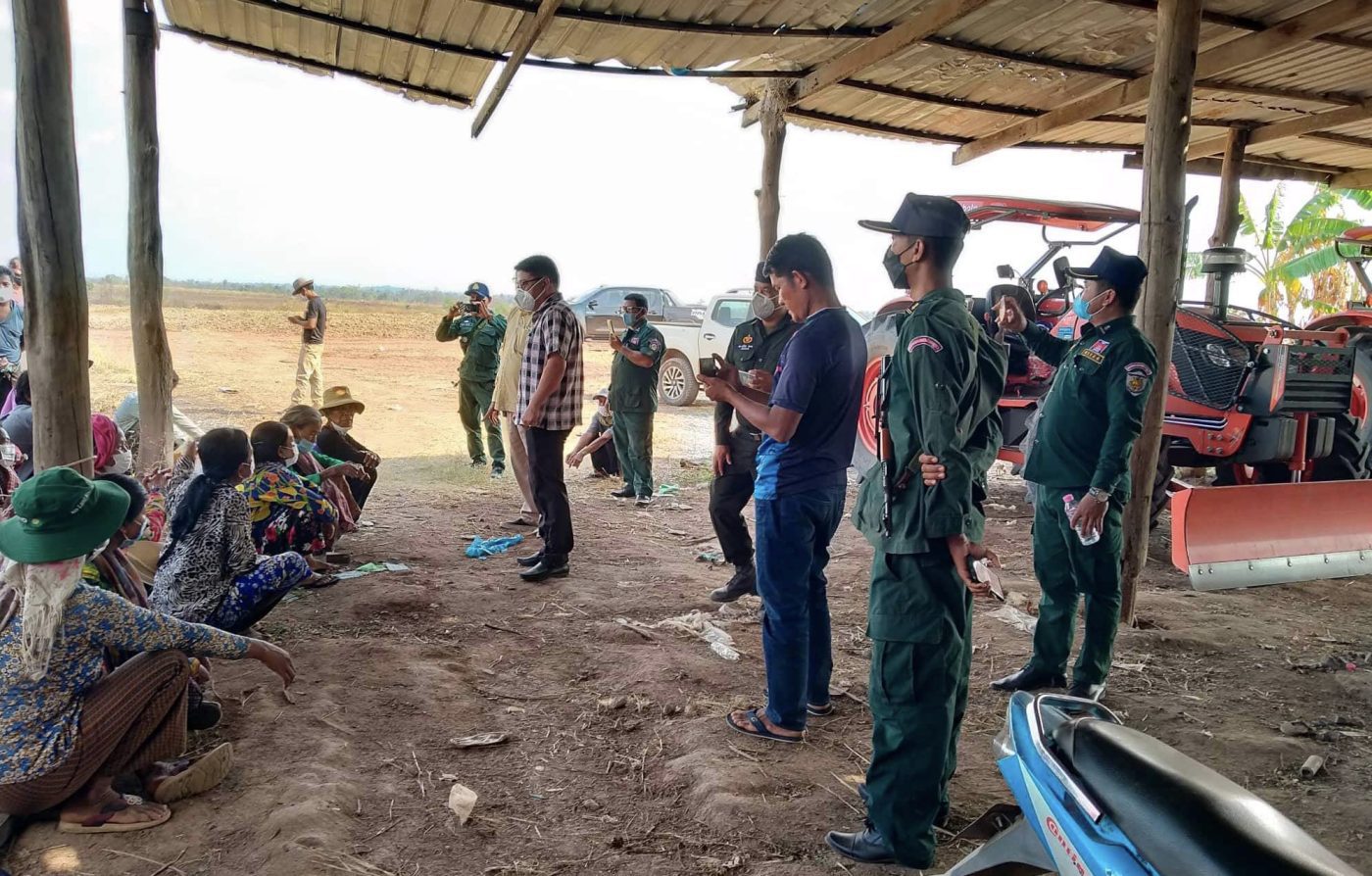
CamboJA could not reach Lan Feng (Cambodia) International Company Limited, a subsidiary of Hengfu Group.
Davuth from the Department of Land Management said the community needs to now re-apply for their collective land.
A report on the demographic and socio-economic status of indigenous peoples in Cambodia, prepared by the Ministry of Planning and the Ministry of Rural Development in 2021, recognizes a total of 155 indigenous communities and 14 ethnic groups in Cambodia.
Davuth said that as of July, the land of 37 indigenous communities is registered, amounting to 38,718.75 hectares.
Veng Sakhon, Minister of Agriculture, told CamboJA that it was not up to him to intervene for the indigenous community because the government had granted the company the economic land concession, even if they’re not using it.
“The government already received the complaint and we have not yet resolved it,” he said, adding that community members should not protest over it because they don’t understand the international rules or legal standards surrounding the case.
Seang Muy Lai, director of the Housing Rights and Research Project at the Sahmakum Teang Tnaut Organization (STT), said a lack of land registration was one of the main reasons for the number of land disputes in the country.
“If all land in Cambodia was registered, then no-one would accuse anyone of living on anyone else’s land,” he said.
However, he noted that the government has been working on land registration and land titles. He added that the government should meet with various stakeholders in land disputes and handle them transparently.


